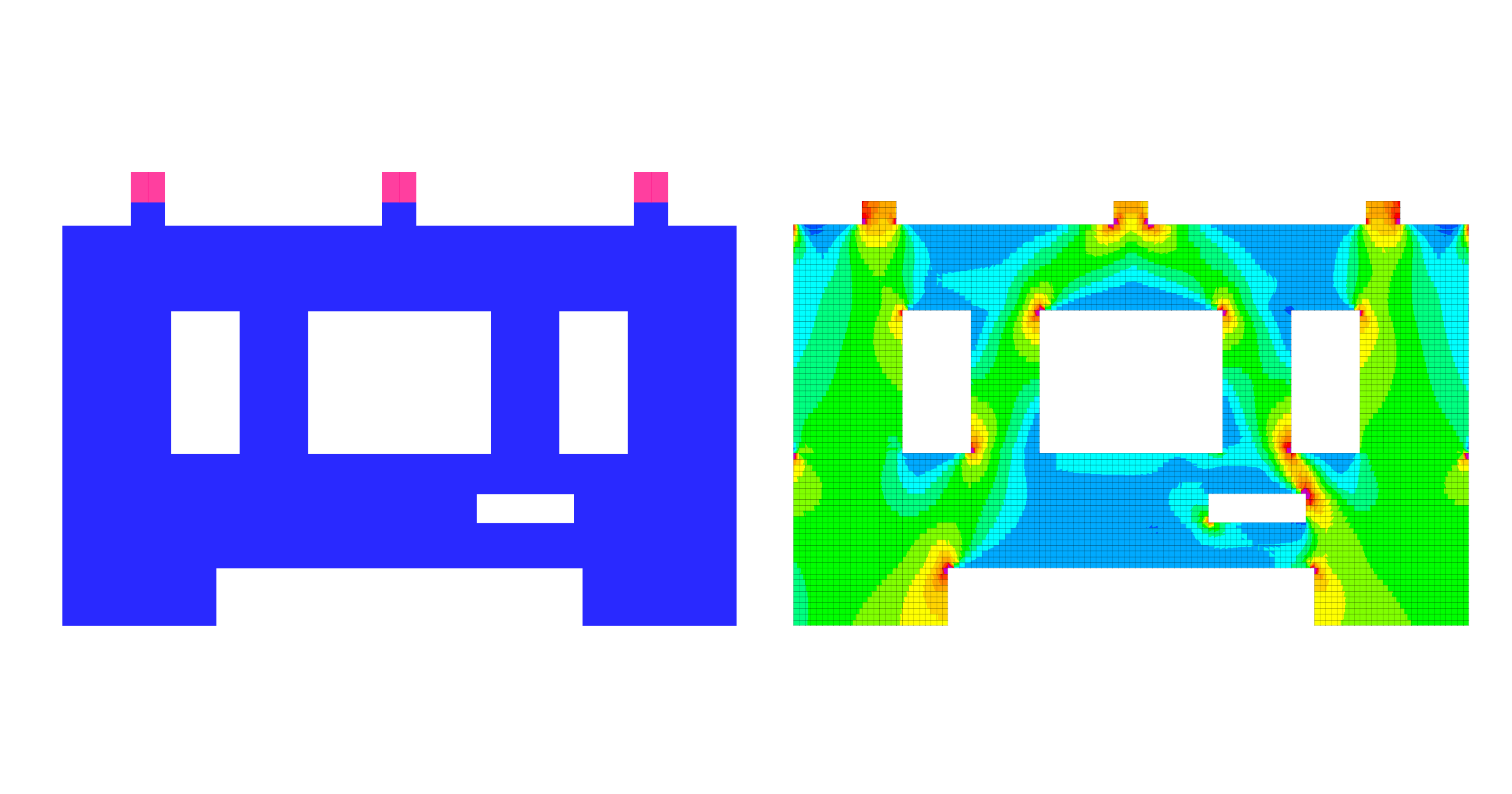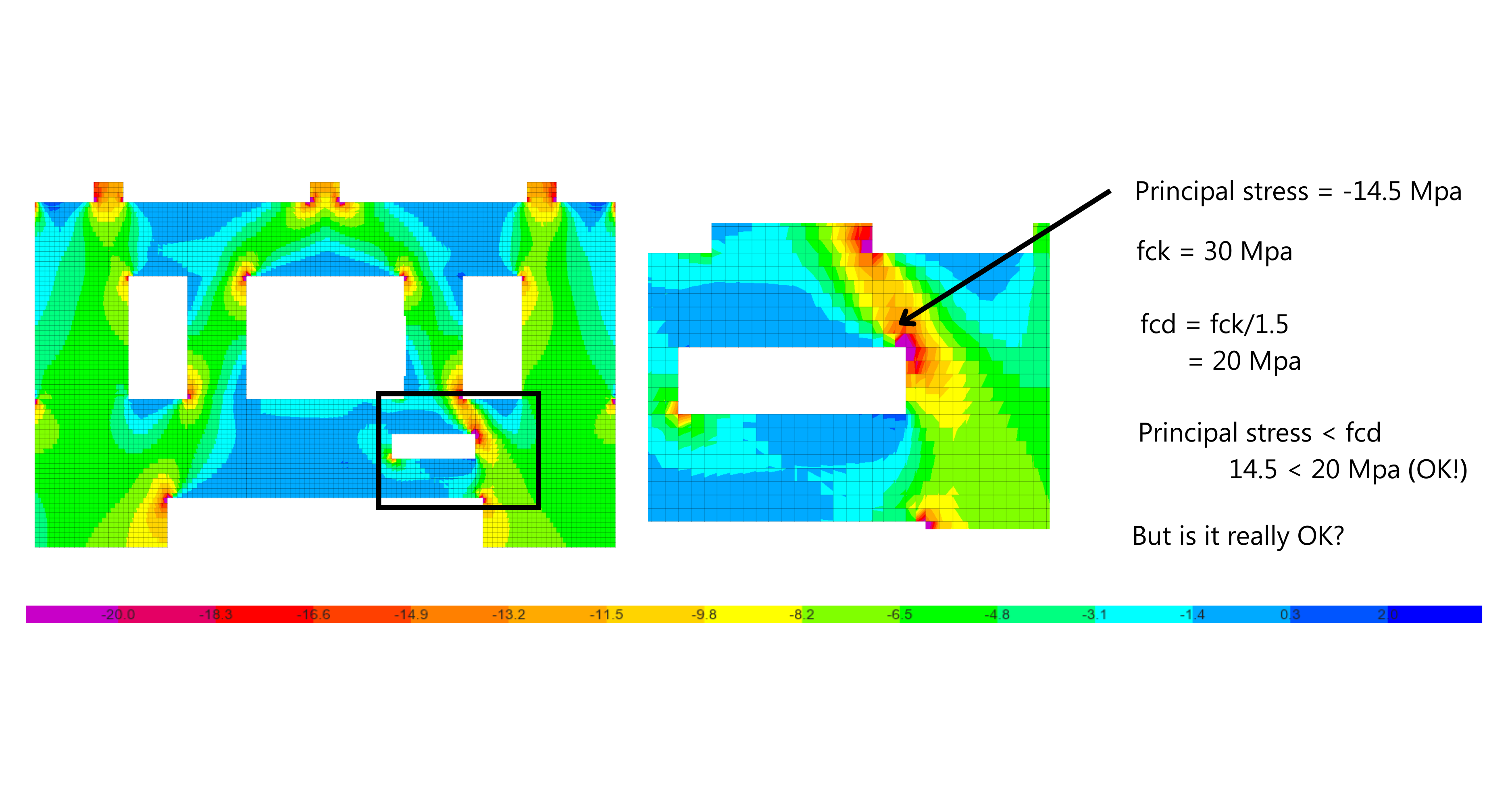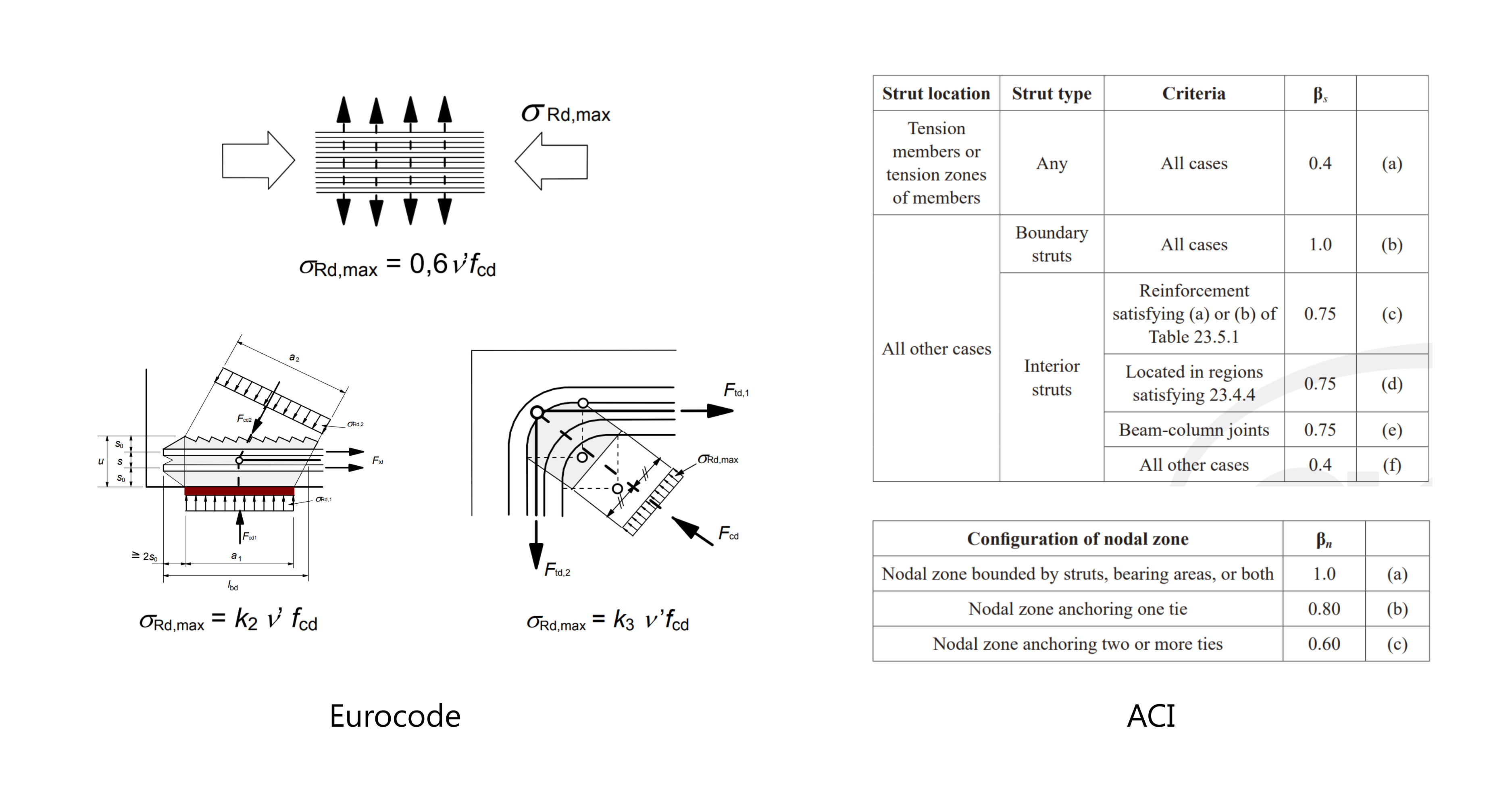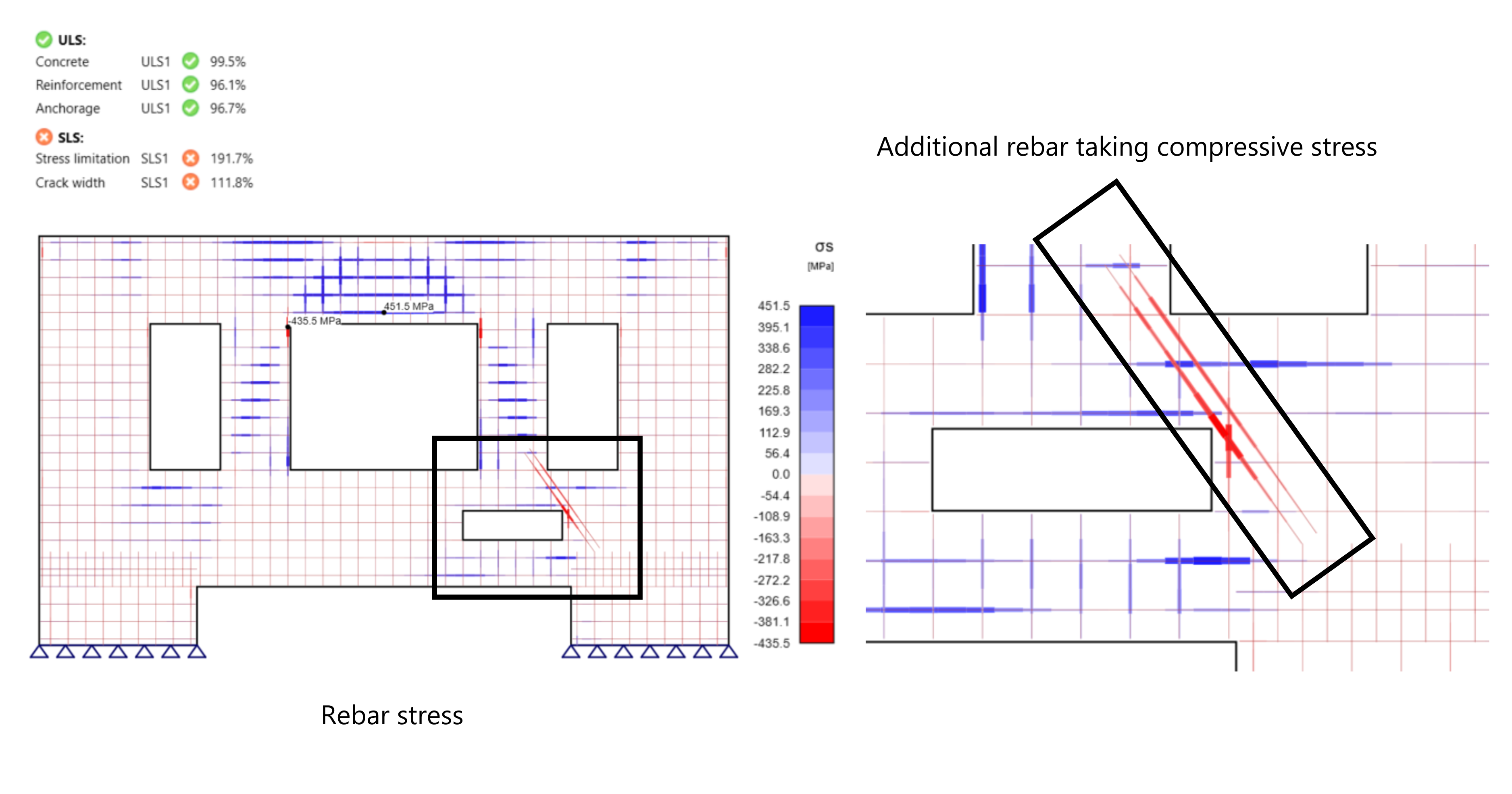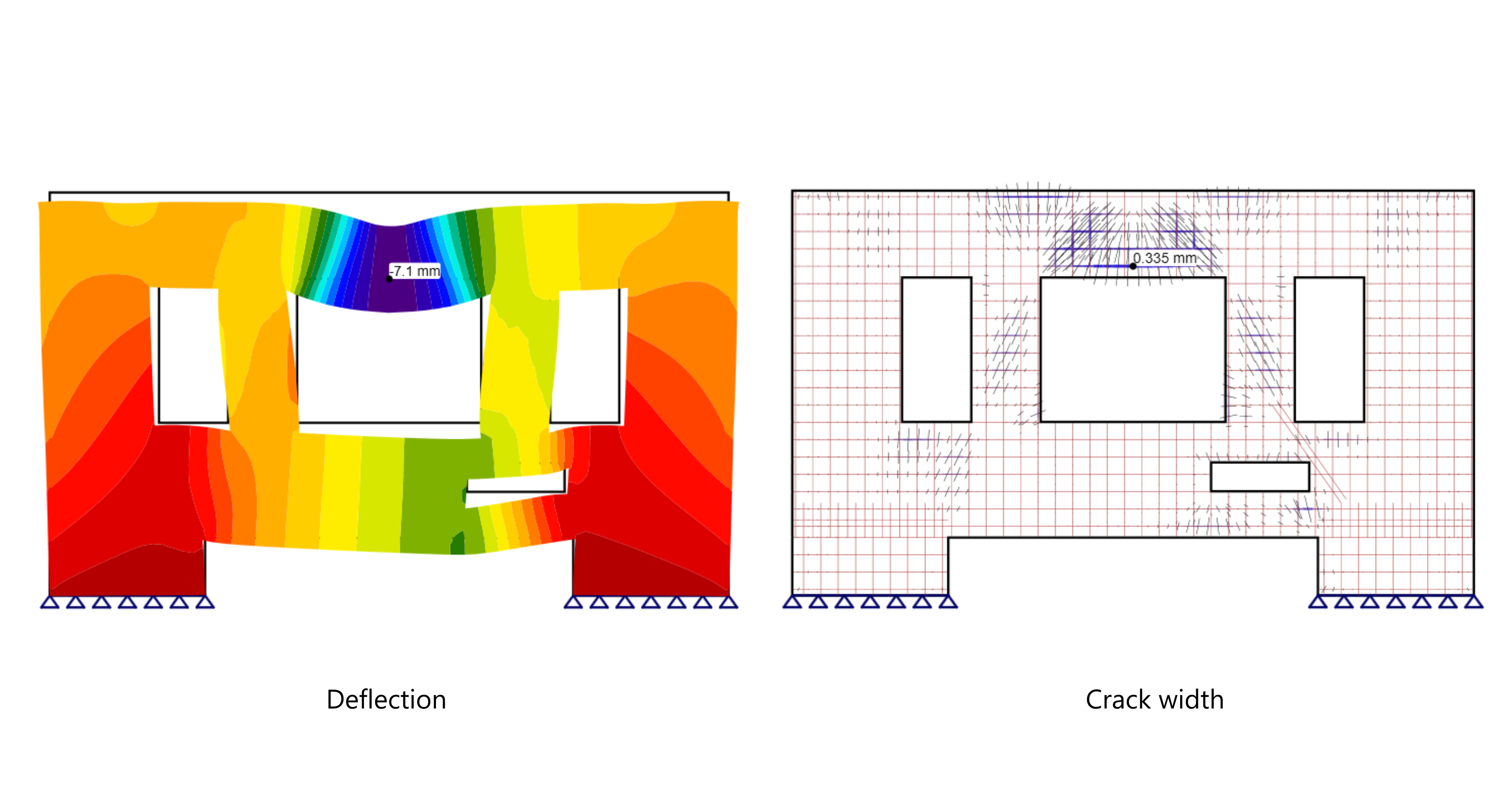Design transfer walls easily using the ETABS BIM Link
Transfer Wall
Transfer wall design is a complex subject because it often behaves like D-regions, where the assumption of plane section is not valid, hence normal empirical formulas found in design code cannot be used. This means that the design feature inside global FEA software, which often uses a beam or column design assumption, is not suitable for this problem.
In the wall shown above, engineers have two options for designing the wall. One is to use strut-and-tie, although this a good and suitable method, there is a lot of manual work and trial-error involved, which might be time consuming. Second is to use approximation in global FEA software by evaluating principal tensile stresses to determine reinforcement requirements and verifying that principal compressive stresses remain below the concrete’s design strength.
Option two seems like a more practical and time efficient choice, but there is a hidden danger lying in it.
Transverse tension
When concrete is placed under heavy compression, it often experiences tensile strains in the perpendicular direction, which is called transverse tension. Once that happens, tiny cracks start to form, and concrete becomes less confined and weaker in compression. This effect, known as compression softening, means that cracked concrete cannot carry as much compressive force as uncracked concrete. In the design code, this effect is considered when designing, for example, a deep beam. In deep beam struts and nodes, a factor of k in Eurocode (or β in ACI) with different values, depending on the situation, is used to reduce the concrete maximum compression capacity due to the compression softening effect.
IDEA StatiCa Detail
IDEA StatiCa Detail uses CSFM (Compatible Stress Field Method), which can accurately handle both B-regions and D-regions. Detail also incorporates compression softening effects into its analysis by using a kc2 factor, hence, it provides a more realistic and safer assessment of concrete strut capacity.
IDEA StatiCa 25.1 provides the import of wall elements from ETABS to IDEA StatiCa Detail. By utilizing this BIM Link, engineers can easily import walls from ETABS for more thorough analysis in IDEA StatiCa Detail.
Shown below is the same wall imported from ETABS and analyzed in IDEA StatiCa Detail. You can see on the top left corner, that with the given basic rebar, the ULS analysis shows failure even if compressive stress are similar (around 15 MPa). Why is that?
This ULS failure is exactly caused by the consideration of the compression softening effect by the kc2 factor which reduces the concrete capacity by a factor of 0.75. Hence the concrete capacity is now, σc,lim = fcd x k2 = 20 x 0.75 = 15 Mpa. That's why with 15 Mpa of compressive stress, the utilization (σc/σc,lim) is shown as 99.5%.
The solution is to add additional rebar to alleviate some of the compressive stress from concrete. This way, the transfer wall can pass the design check as shown below. The requirement to add additional compression rebar would otherwise be missed if engineers did not use IDEA StatiCa Detail.
If you haven't noticed, at the top left corner, the SLS result, which includes stress limitation, deflection (with long term effect) and crack width, is also considered inside IDEA StatiCa Detail. The SLS result is something that the other two approaches described above can't produce.
So, by using IDEA StatiCa Detail, engineers can be fully informed of how their transfer wall behaves, not only in ULS, but also in SLS.
Report
Once the design is finished, engineers can produce a comprehensive report showing all the analysis results for submission. On top of that, bill of material for the rebars can also be generated for fabrication purposes.
Conclusion
The design of transfer walls demands careful attention to the complex stress interactions that occur within D-regions. Simplified approaches or direct use of global FEA results may overlook important effects such as compression softening, leading to an overestimation of concrete capacity. By using IDEA StatiCa Detail and its CSFM-based analysis, engineers can account for these nonlinear behaviors accurately, ensuring that both ULS and SLS requirements are properly verified.



